Salzburg (Austria) welcomes you with its sunshine, greenery, colorful lights, cows and traditional houses ! The land is crossed by the Salz River, and its two banks are distinctly different in terms of landscape and architecture, but above all they complement each other: on one side, the old town and its Italian heritage; on the other, the new town and its more recent buildings; all surrounded by the Kapuzinerberg, Mönchsberg and Hohensalzburg mountains.
The picture below shows a panoramic view of the Old Town. You can pretty much see the different architectural styles from different periods that make up the Old Town district: the Hohensalzburg (up-right), which dates back to the Middle Ages (1077); the Salzburg Cathedral with its green dome (17th century, Baroque) and the Collegiate Church or Kollegienkirche, with its black dome (1707, Baroque).
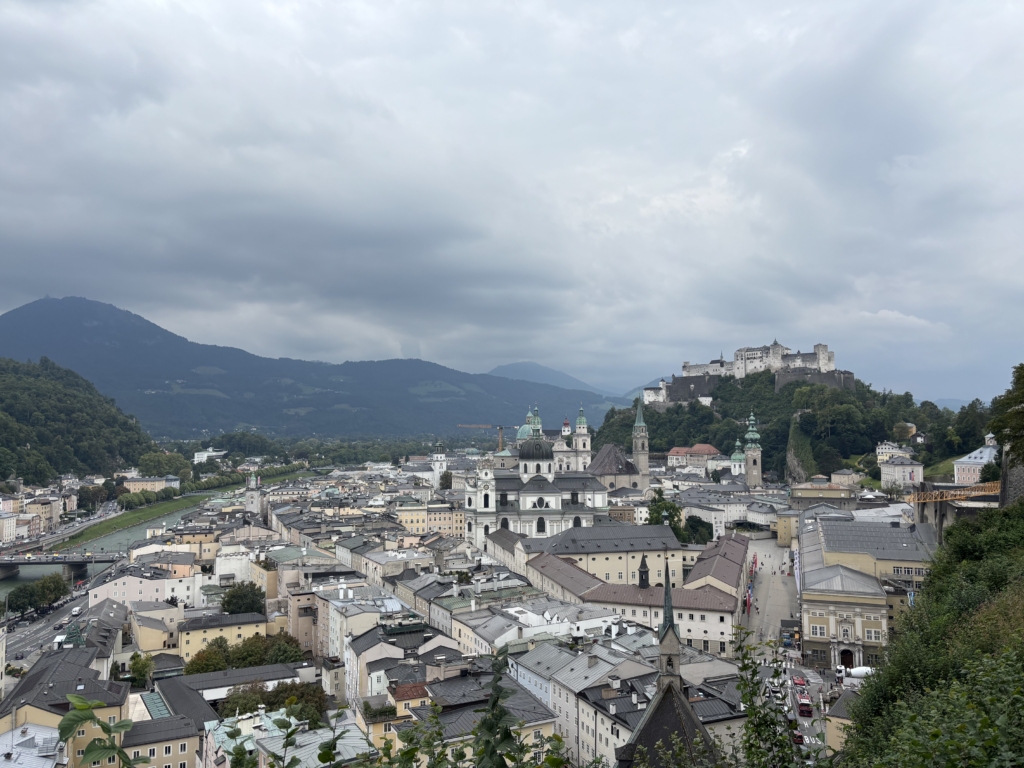
As its name suggests, the Collegiate Church is linked to the Benedictine University of Salzburg, founded in 1622. It is also noteworthy that, as it was also the case for the University of Prague (1348) which I mentioned in my previous post, law, medicine, philosophy and theology were taught there.
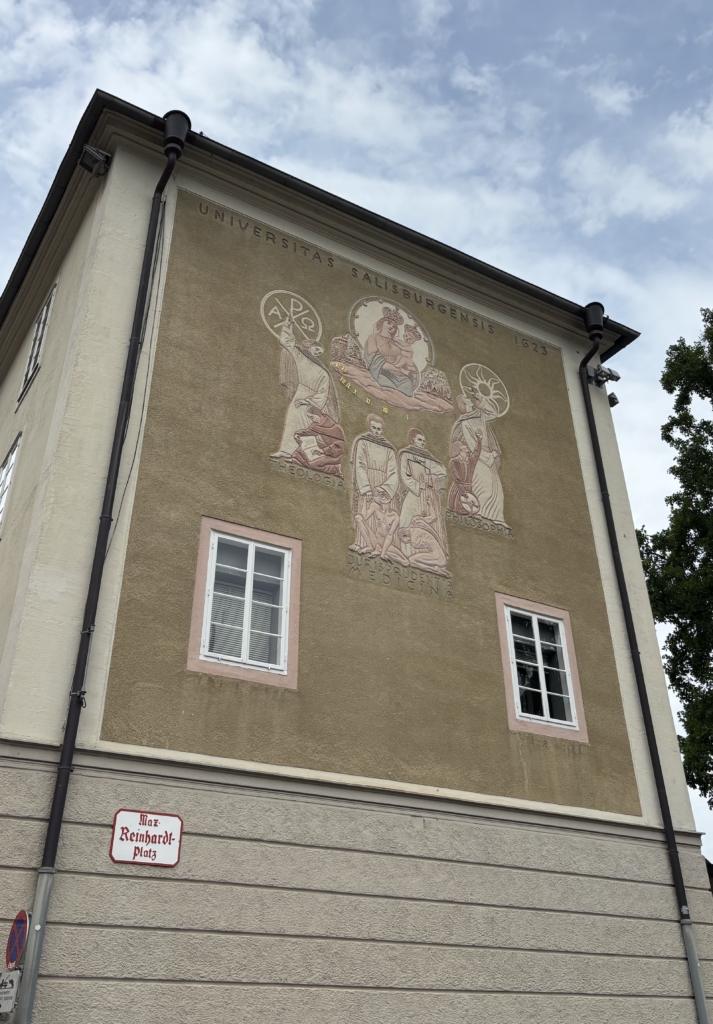
Speaking of education, Hohensalzburg Fortress has a museum that displays various objects and artefacts relating to the city’s history. Among the exhibits, I came across a tilted stove, which dates back to around 1570, featuring the ‘7 Liberal Arts and Planets’, pictured as human beings. The seven liberal arts, translated from the Latin ‘artes liberales’ meaning ‘knowledge, field that liberates the soul’, refer to two cycles of intellectual disciplines, seven in total, which date back to the origins of education during the Antiquity. The first cycle (trivium) refers to grammar, rhetoric and logic; the quadrivium refers to astronomy, geometry, arithmetic and music.
I did not expect to come across such a symbolic object representing the high function of education in the 16th century, even less so at the top of a hill!
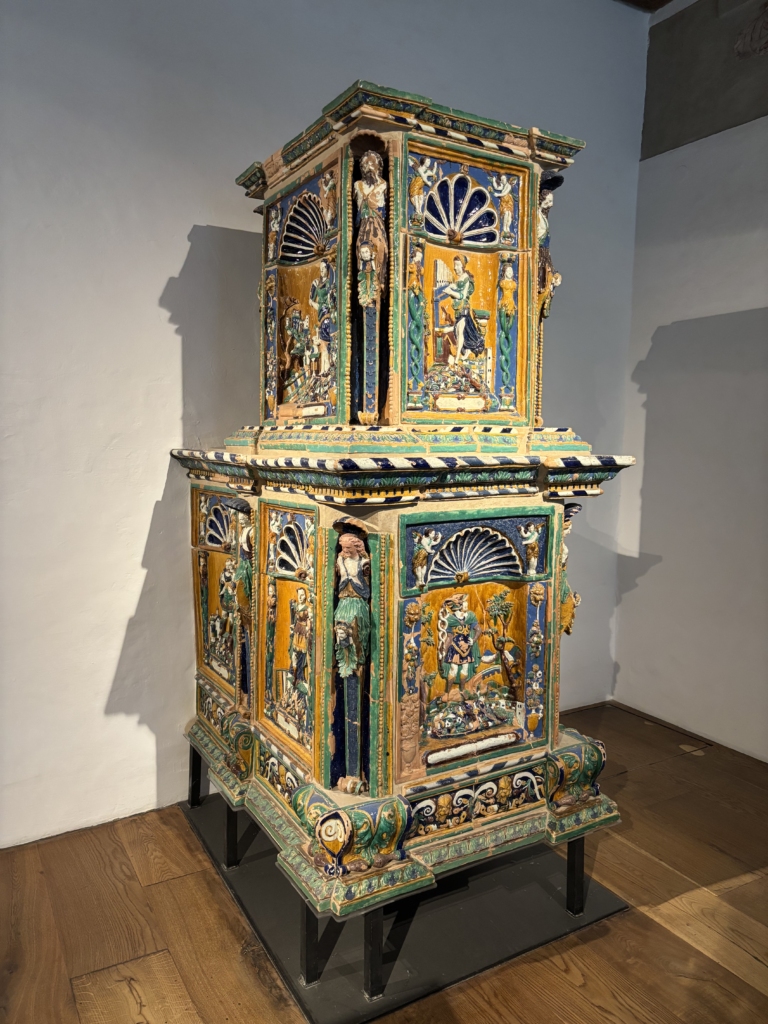

Returning to buildings and churches, since Salzburg has many of them, you will find below a good example of the alignment of the architecture and its Italian-renaissance influence. If you look closely at the Statue of the Virgin Mary (left picture), you can see that it is placed in front of a crown held by angels on the Cathedral itself. On the other hand, the Kollegienkirche (right picture) is built in such a way that sunlight enters from the altar side, above which seventy-one angels can be seen arranged on clouds around the window. Here again, these details reflect a symbolic consideration in the building’s design.
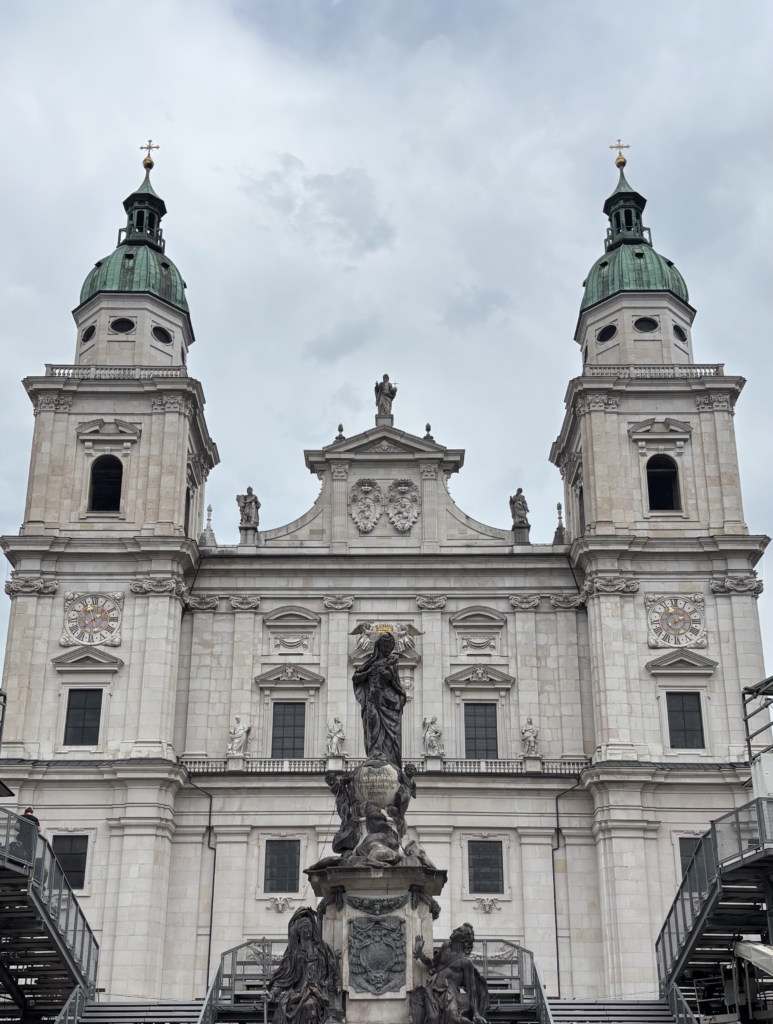
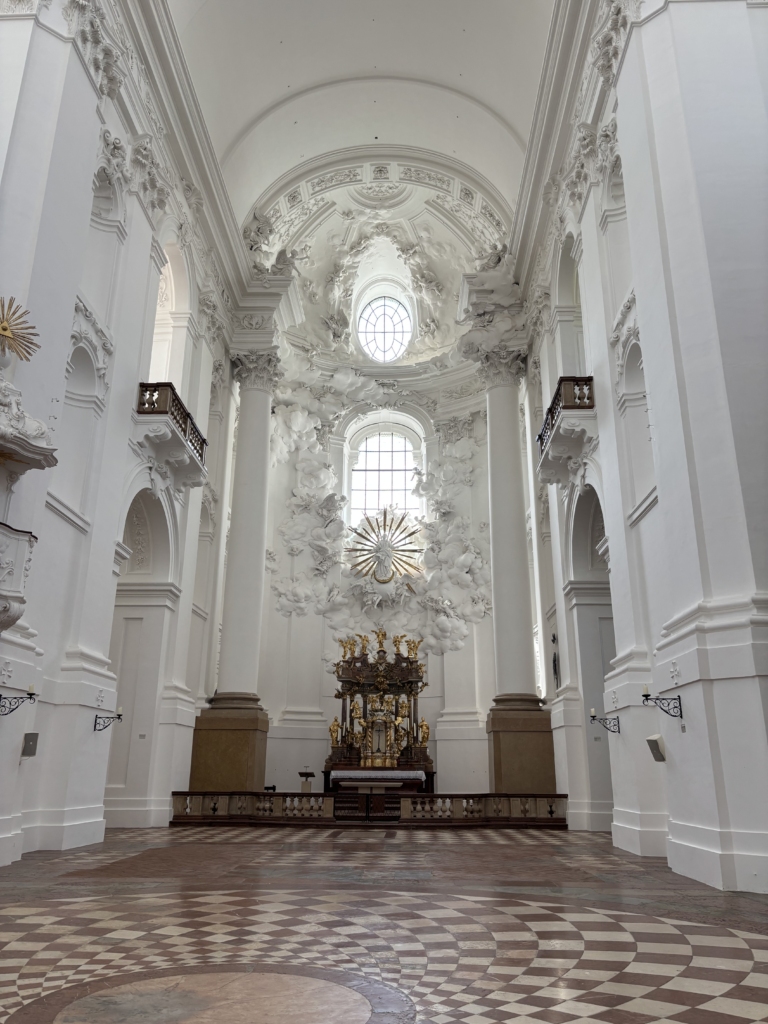
Built in 1606, Mirabell Palace, which belongs to the UNESCO World Heritage list, now houses the offices of the Mayor of Salzburg and the municipal administration. Suzanne and Dagmar showed me the Marmorsaal (where you can get married!) and taught me how to make the difference between marble and other rocks: by the temperature! The Garden is beautiful and welcomes thousands and thousands of flowers, fountains and marble statues representing mythological figures but also dwarfs, 17th-century caricatures, representing famous sports games or even the 12 months of a year. Salzburg’s Dwarf Garden (Zwergerlgarten) is the oldest in Europe.
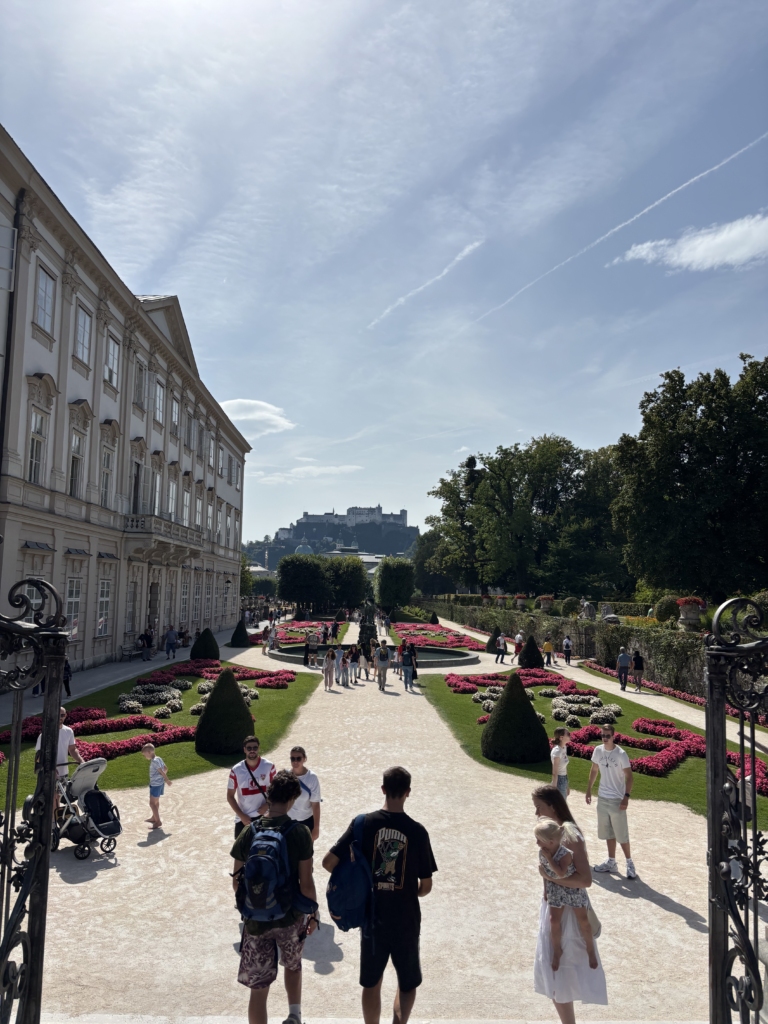
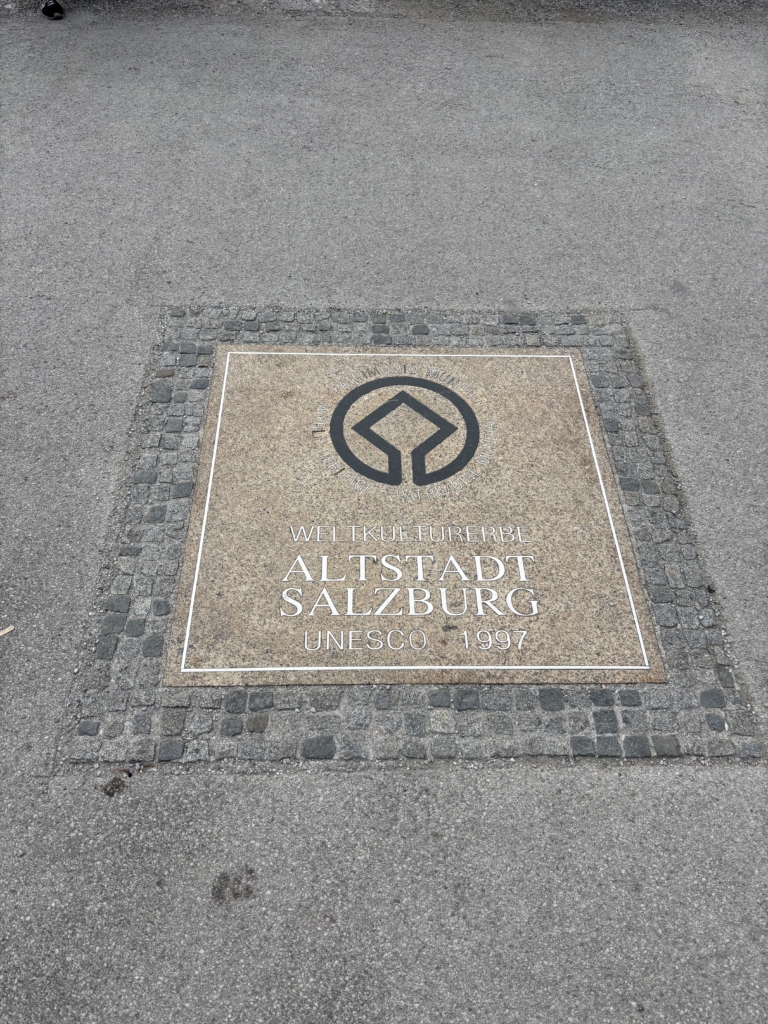
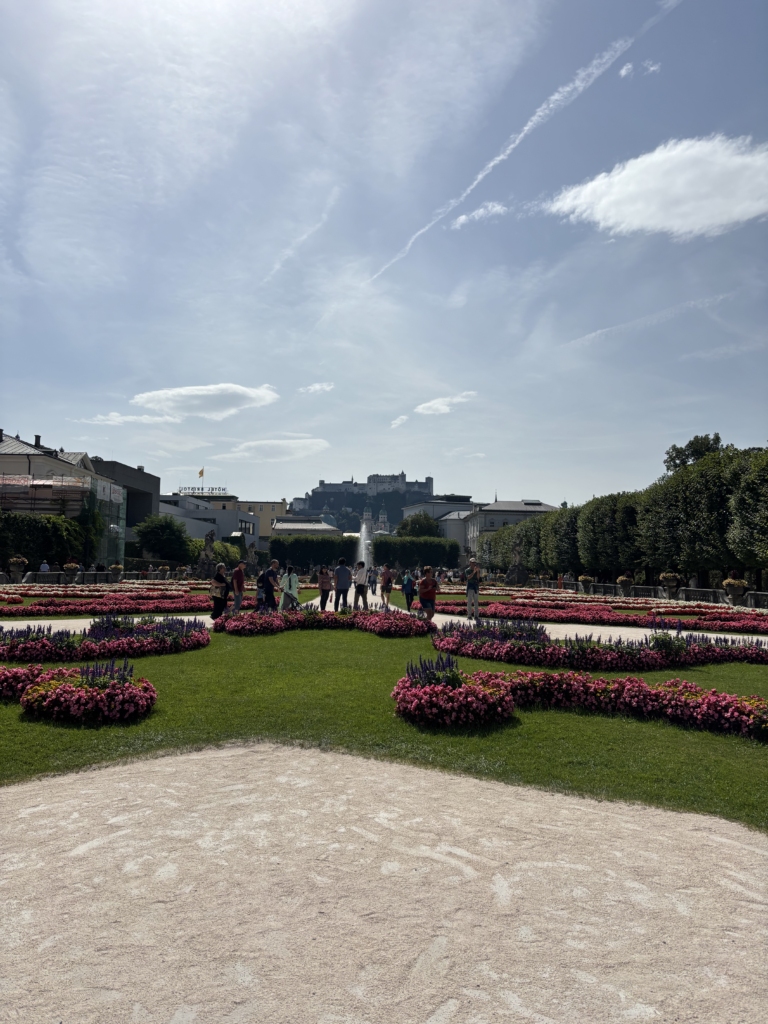
Before concluding this chapter, it is essential to mention the names of some of the artists who used to live here and also contributed to the city’s history and its representations.
Georg Trakl (1887-1914) was an Austro-Hungarian poet who had a troubled life; his works are filled with a unique, dark imagination, influenced by certain obvious Germanic poets: Hölderlin, to whom we owe the expression that I love, ‘Full of merit, yet poetically man dwells on this earth’, Novalis (and for the record he despised Goethe); on the French side, he appreciated Charles Baudelaire and Arthur Rimbaud. If you have already read some of their work you can already guess the tone of its poems. Part of his work is devoted to depicting the landscapes and traditions of Salzburg, which is why plaques such as the one pictured here can be found in several corners of the city.
The second, famous composer Wolfgang Amadeus Mozart (1756-1791), needs no more introduction I think! Born and raised in Salzburg before leaving for Vienna, he is known for his Requiem ‘Lacrimosa’, Eine Kleine Nachtmusik, Letter to Elise, but I would also highly recommend its Symphony No. 41, ‘Jupiter’, composed in 1788! Johannes Brahms even considered it superior to Beethoven’s work. It is up to each individual to form their own opinion…
Not to mention other major figures who spent time in Salzburg, such as Stefan Zweig (who stayed there from 1919 to 1934), conductor Herbert von Karajan (1908-1989), or actor Max Reinhardt (1873-1943) and writer Hugo von Hoffmanstahl (1874-1929) who both created the Salzburger Festspiele in 1920, a theatre, opera and classical music festival that has been held every summer since then. It was precisely for its tranquillity, artistic prestige and Baroque architecture that the city of Salzburg was chosen.
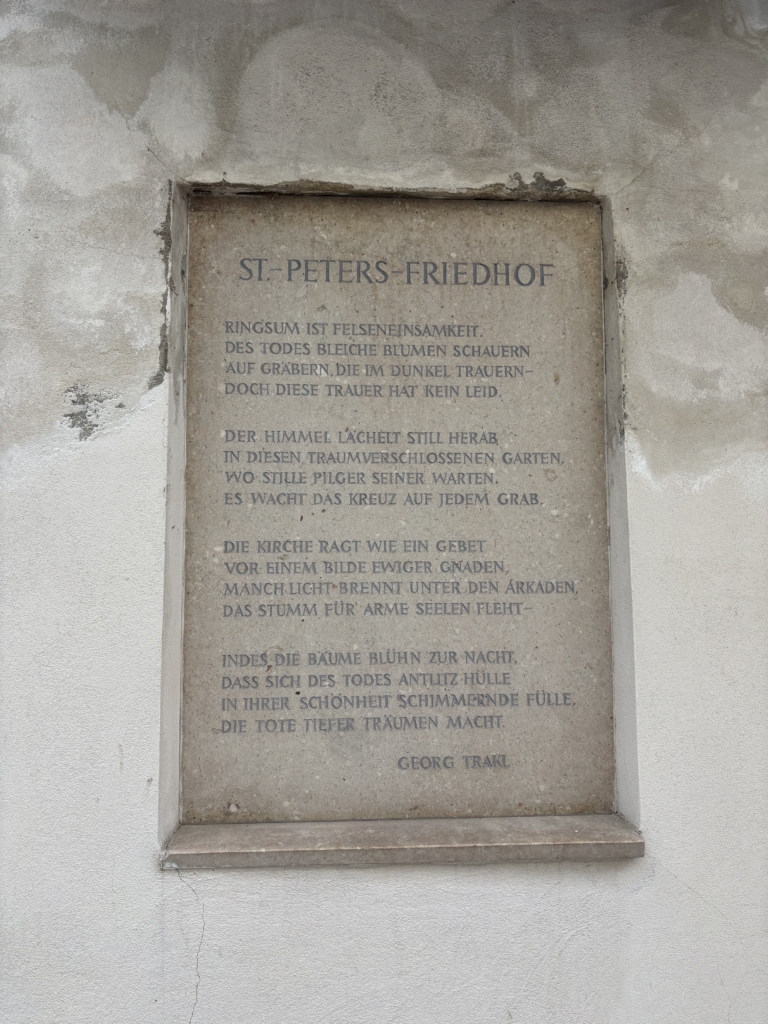
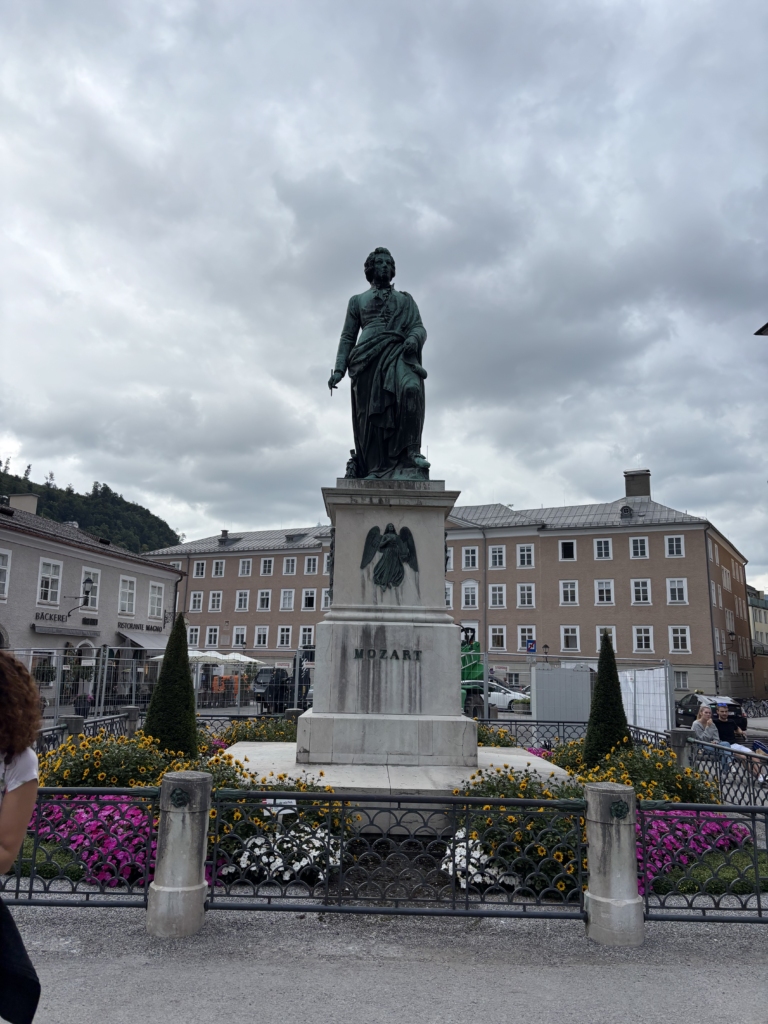
This is where my stay in Salzburg comes to an end. I would like to thank Suzanne, working in communication, and Dagmar, a building historian who studied art history, who work for the city of Salzburg and UNESCO and offered me a fascinating day-long tour of the city! I learned a lot of things in areas I wasn’t necessarily familiar with. They brought me in most of the places I reported here, along with explanations, and lively discussions over a delicious meal!
From its city streets to its mountain peaks, this city will take you on a journey you are definitely not used to! One last thing that may raises your interest: a museum dedicated to the heritage and legacy of the city of Salzburg will open its doors near Mirabell Palace in 2026. Given all that this city has to offer, as well as its pleasant atmosphere, I can only recommend you to come visit these places. Winter is probably a beautiful season too, as Salzburg will host its annual Christmas market!
The next and final stop is Strasbourg, my homeland. See you there, dear travelling companions!


